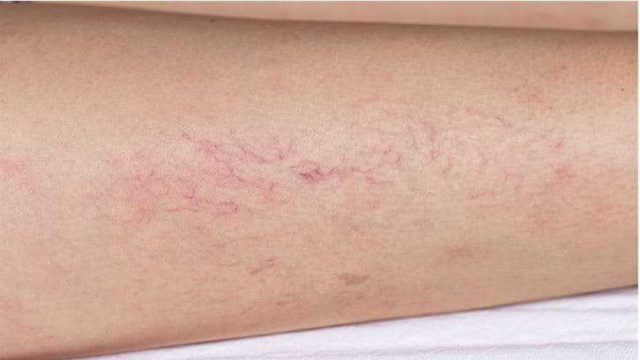Published on:12-12-2022
Chronic Venous Insufficiency, known by its acronym CVI, is the inability of the veins to adequately return blood to the heart, which causes the accumulation of blood in the legs, leading to various symptoms and problems.
Veins and arteries play a fundamental role in the correct functioning of our circulatory system since they are responsible for transporting blood from the heart to the whole body in two directions: from the organ to the different parts of the organism -arteries-and vice versa -veins-. The walls of the veins have tiny valves that open and close and serve to help control the pressure and flow of the blood, facilitating its proper return to the heart.
In the case of the legs, two systems allow the blood to overcome the force of gravity and return to the heart:
- Vein valves are only oriented upward towards the heart, allowing the flow of blood from the veins to the heart.
- The second system is known as a muscular pump. The veins of the lower extremities are located between the muscles, so with each step we take, there is a muscular contraction that squeezes the veins and allows the upward flow of blood. Therefore, it is advisable to walk or do physical exercise to promote circulation.
However, when the veins in the legs lose elasticity, they dilate and cause the valves to separate from each other and not close properly.
Consequently, the blood, attracted by the force of gravity, accumulates in the legs, producing Chronic Venous Insufficiency (CVI), a disease whose main manifestations are varicose veins and tired legs. Having a sedentary lifestyle or not exercising enough can also lead to this disease since the muscle pump does not work.
Symptoms of Chronic Venous Insufficiency
Venous insufficiency manifests itself with itching and tingling, swelling, intense pain, a feeling of heaviness or cramps in the legs, and pain that worsens when the person stands still and improves when the legs are raised or held high. Aside from that, there are irritated or dry areas that can be scratched, redness, superficial varicose veins, hardening and thickening of the skin of legs or ankles, and ulcers or wounds that take time to heal in these same areas.
Causes of Venous Insufficiency or Why it Occurs?
Usually, venous insufficiency is due to a valve malfunction in the veins. However, it can also occur due to an old blood clot in the legs that obstructs or prevents the normal flow of blood.
Among the risk factors is the passage of age, family history, a history of having suffered deep vein thrombosis in the legs, being obese, being pregnant, sitting or standing for an extended period, being tall, or being a woman. In the latter case, it is related to the hormone progesterone levels.
Can Venous Insufficiency be Prevented?
Prevention is done with the administration of anticoagulants after suffering a deep vein thrombosis and the application of compression stockings during the two years following the thrombosis or venous trauma of the lower limbs.
Lifestyle changes that can minimize risk factors such as weight loss, regular exercise, or sodium reduction in the diet help reduce pressure in the lower limbs.
What Does the Treatment Consist Of?
Treatment will consist of using elastic stockings and avoiding spending many hours in the same position, as well as other factors that predispose to its formation and blood stagnation. If these measures are insufficient, pharmacological, or surgical treatment will be necessary.
Patients with symptoms such as pain in their legs or thickening and hardening of their legs and ankles may be prescribed non-invasive treatments for varicose veins. If you have a wound, ulcer, or skin condition, you should take care as directed by a specialist.

